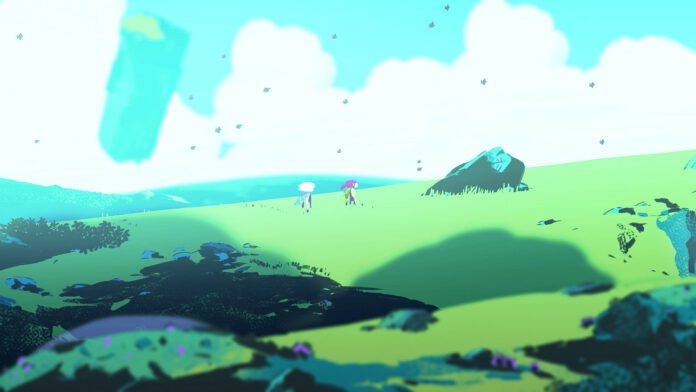REVIEW : Voyage (PC)
When a video game catches the hand-painted whimsical atmosphere of our favourite animated flicks, it’s a rare event, but independent developer Venturous has done just that with a new game that provokes a pinch of nostalgia. Voyage (not to be confused with the 2005 puzzler of the same name by Kheops Studio) is a side-scrolling adventure with two characters. You will navigate magnificent artistic scenes solo or together with an AI companion, striving to piece together whatever fragments of environmental storytelling you come across. The game accomplishes exactly what it sets out to do and has a visual style and ambience reminiscent of Studio Ghibli’s more sombre films. Console versions out 12th August 2022.
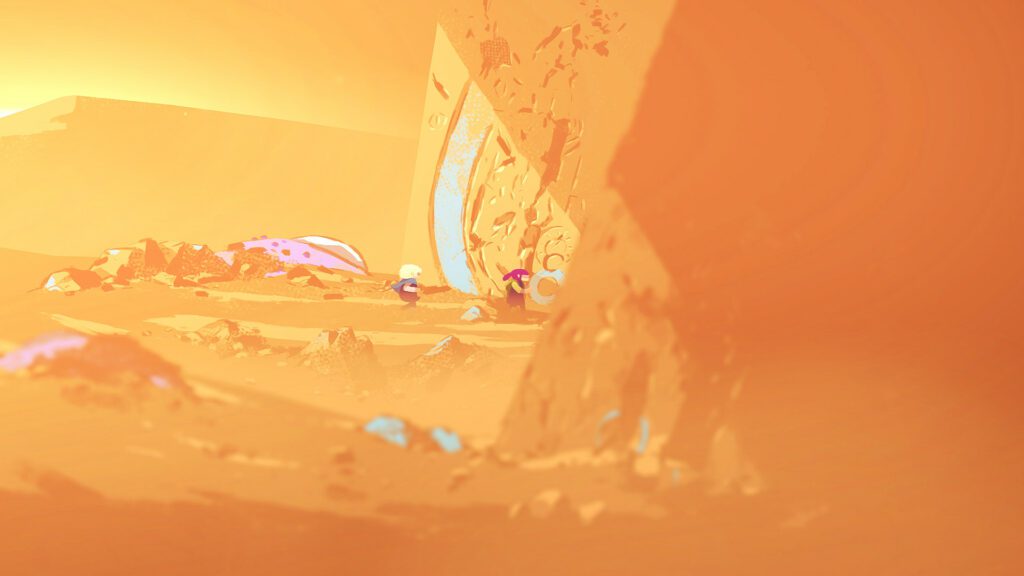
It’s a truly enjoyable experience if you prefer your journeys to be quick and easy.
Two people stuck in an alien world strive to find their way home in Voyage. Beyond their humanoid features – one appears to be a woman with purple-ish hair in a ponytail, the other an older man with white hair and beard – you don’t learn anything about them or where they come from. The game opens with these two emerging from a crystal-like pod, which is necessary for the rest of the context you will encounter. The story is delivered entirely through pictures, with no language, so you’ll have to figure out what’s going on for yourself.
To get away, the heroes will have to go through lush forests, breezy deserts, and deep caves, each of which is studded with ruins or bits of the derelict ship and has threats from the terrain and wildlife. These locations each have their distinct appearance, giving the impression that you are travelling across a diverse range of biomes and temperatures that an extraterrestrial world may have to offer. The majority of the game will be spent sprinting and climbing, taking in the lovely sights and sounds, yet the path will be riddled with challenges to overcome along the way.
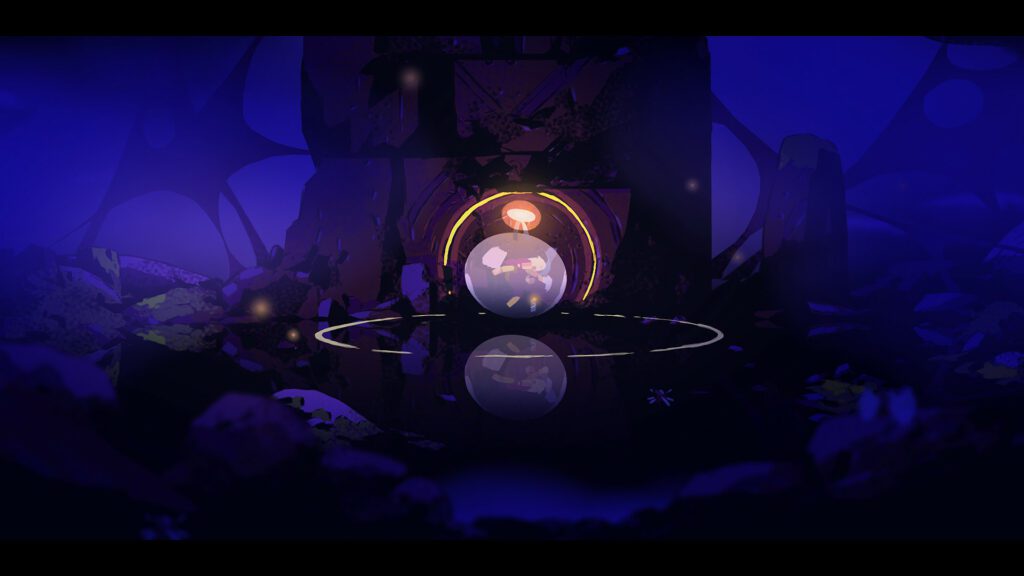
Because there is no challenge involved, I prefer to call them impediments rather than puzzles. Every aim is as simple as looking for hotspots and then interacting with each one, which results in pushing, pulling, or pressing the object in question, until something happens that allows you to progress. To reach higher ground, you may have to punch a succession of buttons (in no particular order), clear debris, or overturn one of the numerous enormous objects. While these portions enable some minor world-building by interacting with the deteriorating relics of the planet’s ancient civilisation, they are generally mindless and require no thought.
Needless to say, there is little to no trouble here. This is good because Voyage is meant to be more of a cinematic experience, but the repeated stumbling blocks do little more than slow the pace in insignificant ways; not enough effort was put in to make these “puzzles” feel like much more than a bit of interactive fluff.
The game may be played with a player beside you, but why play co-op when there are no problems to tackle together? Aside from exclaiming on how gorgeous everything is, the cryptic storyline is what makes it worth sharing with a buddy, as half of the fun is speculating on what the heck everything means.
Except for the occasional grunt or cry, no words are uttered, and the only text you’ll see is the developer’s logo and the game’s title. Everything, including the options menu, is represented by graphics. As you journey across the earth, you may come across translucent spirit-like beings sitting on a log observing you from afar, or you may come across enormous numbers of them as they appear to be travelling in the same direction as you in some type of mass exodus or pilgrimage. I assumed they were planet inhabitants, or perhaps simply traces of them.
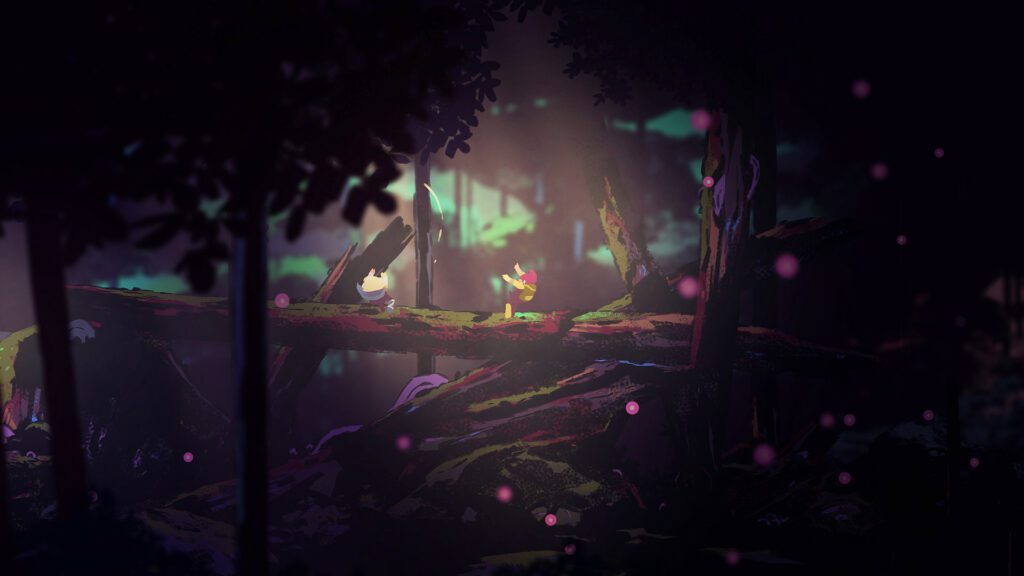
In any event, the universe appears to be narrating its own story that parallels the two characters. The fact that you’re not here to research or comprehend the planet, and the two protagonists are just trying to get home, adds to the mystery.
Voyage is best played with a controller, however, a keyboard can be used if you like (with a second person on the controller). Movement isn’t particularly enjoyable, as it simply allows the duo to sprint left or right pretty stiffly. There is no leap button; instead, you must interact with particular objects to climb them.
You’ll have to figure out what’s climbable based on the environment, but the game does a nice job of making it clear. You use the same button to manipulate things and initiate cooperative actions, such as assisting your buddy in climbing a high cliff. Objects that must be pushed or pulled often require the combined strength of both characters to move, therefore the AI-controlled character will immediately join you if you are playing alone.
If you touch the interact button side by side, or if you both hit it in co-op, the two characters will hug.
When attempting to engage with items, this can result in quite a few unintended hugs, however, such errors are usually entertaining or heartwarming rather than frustrating. Another button will highlight all nearby hotspots for you, with a visual indication appearing over each one as a pleasant ping sound plays for each; the audio also helps point out off-screen hotspots. Because there is no other indicator of where hotspots are, this function can be highly useful. Some buttons cause your characters to gesture and shout. In single-player, they can be used to give your companion a halt or follow orders, while the “pointing” action will cause you to switch between characters.
These motions, like everything else in the game, are in the manner of hand-painted animation. Each action appears seamless and captures the sensation of a meticulously created animated film. The settings, both in the background and foreground, are well brought to life: the forest is packed with critters, birds soar by, and flowers move in the breeze. I was especially struck by how the characters are illuminated by light shafts. This realistic experience is further enhanced by detailed sound design and outstanding music. Each of the aforementioned ambient features is accompanied by a clean and realistic sound effect.
To begin, the score has delightfully whimsical themes reminiscent of The Legend of Zelda games or vintage JRPGs. The arrangements, which vary depending on where you are, include a wide spectrum of instruments, from synthetic sounds to orchestras to piano alone. The music typically provides a pleasant and peaceful ambience, though this might vary depending on what is going on on screen. There is no voice acting, just occasional grunts and gasps as you climb.
Unfortunately, while the animations are great, there isn’t much done to characterise or make you care about the characters. They don’t appear to react to anything until the last cutscene. This causes the climax to fall flat, as there is a definite attempt to make it emotionally charged, but I will abstain from going into further detail to avoid spoilers. Another issue is the pacing: while the graphics and soundtrack are gorgeous, there isn’t much to look at in some of the slower areas, such as when you’re in a mostly pitch-black cave, and there may be some backtracking.
Some are necessary to a lesser extent, but you will also need to retrace your steps if you missed anything in passing. This can be prevented if you use the hotspot button diligently, but it grew tiresome for an impatient guy like myself. Those gorgeous foregrounds I described before also obscured my vision a few times. It didn’t cause any serious issues, although it did feel a little obstructive.
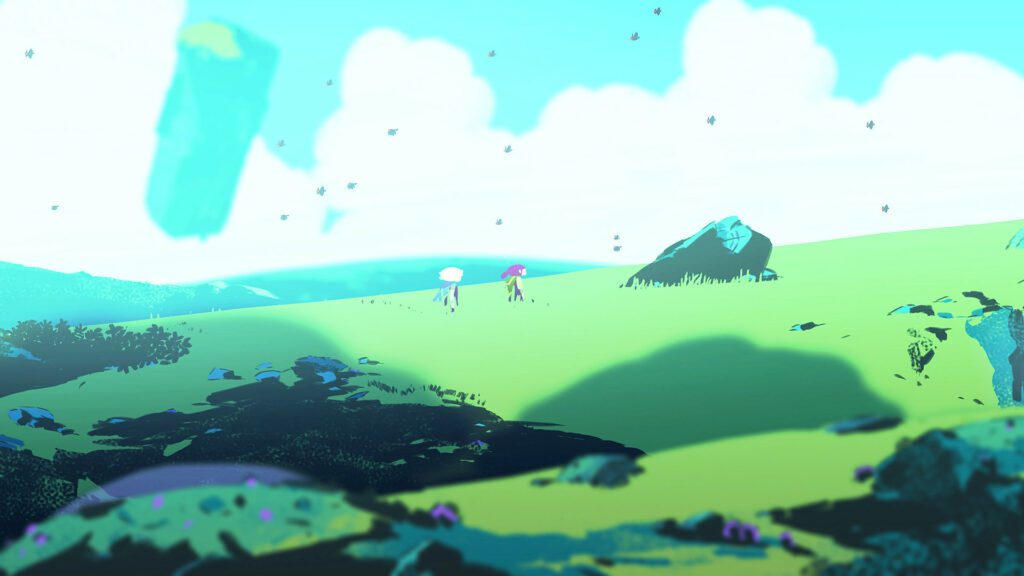
At roughly two hours, Voyage entertains for slightly longer than your normal feature-length film, and without more hard gameplay, it would start to outstay its welcome if it was any longer.
Due to the game’s linear design, there is no motivation to replay it, which is not to say you won’t want to enjoy it again for its amazing sights and music, possibly with a companion if you played it alone the first time (or vice versa). Even with some minor annoyances, I rather loved my time with the game and admired its extremely evocative presentation, particularly in the more detailed, less meandering locales of the first half. If you like puzzles in your adventure games, there’s not much to hang onto here, but as a cinematic experience, Voyage shines brightly while it lasts.
REVIEW : South of the Circle (PC)

